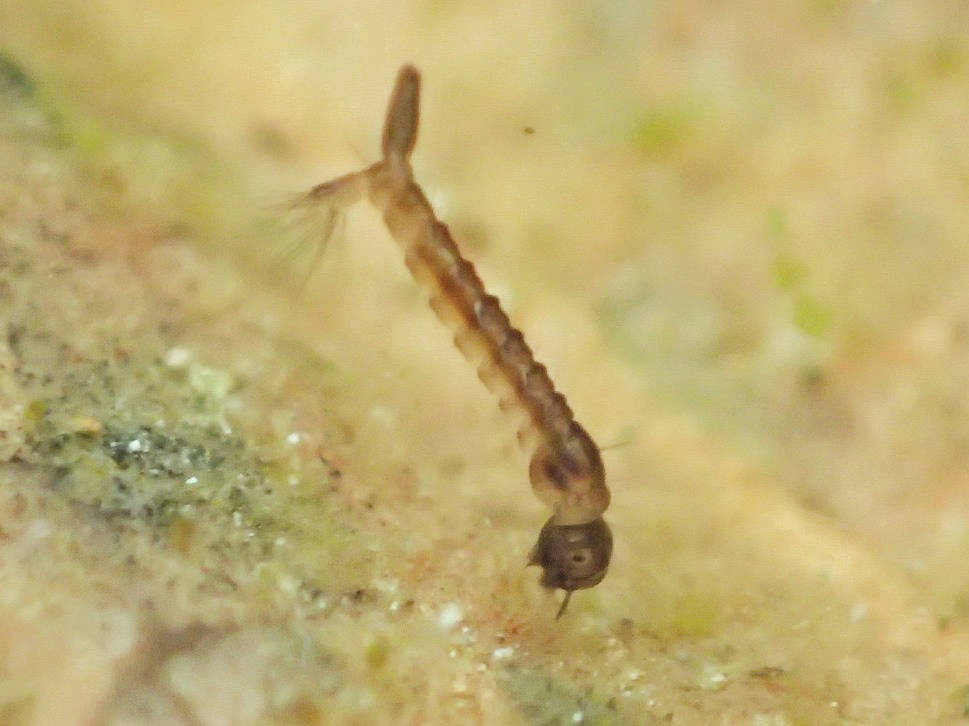Also known as the buzzing noise in your face and ears, stinging feeling on uncovered and unattended skin, and the itchy bumps after spending any time in the great outdoors, mosquitoes have been dubbed Alaska’s unofficial state bird.
As a wildlife biology technician and an all-around outdoorsman, I spend the majority of the spring, summer and fall outdoors — just like a good majority of Alaskans. I work, hunt, fish, harvest, camp, hike and do so many other things.
A lot of times I find myself just absorbing the grandiose scenery and experiences of this big beautiful state. Living in Kansas for the first 30 years of my life, I’m used to agriculture fields as far as the eye can see.
Yes, there are hills, trees, fish and animals to pursue there, but not the awe-inspiring surroundings of this state, including the Kenai National Wildlife Refuge!
Unless you are from Antarctica or Iceland, you’ve known about and dealt with mosquitoes before, but some places, like parts of Alaska, take the mosquito experience to another level.
With approximately 35 species hatching at different times of the warmer months, we here on the Kenai Peninsula have it very mild compared to the Arctic tundra that experiences the worst of it.
The Kenai refuge is approximately 3,000 square miles, but has a variety of terrain. Farther north, the Arctic tundra covers approximately 94,000 square miles.
Due to the flat terrain, and increasing and almost constant sunlight through the summer, snowmelt creates a vast landscape of puddles that can incubate and feed an untold and frankly horrifying number of mosquitoes.
Around the world, mosquitoes have been the vector for many terrible diseases. The Centers for Disease Control and Prevention lists 10 diseases mosquitoes can carry and spread, some of them receiving a lot of news coverage like malaria, West Nile virus, Zika virus and yellow fever.
Fortunately for Alaskans, the numbers of diagnosed diseases is very low. On average, according to the CDC from 2004 to 2018, there have been about seven cases of mosquito-borne illnesses per year.
Even without the disease component, everyone who has encountered mosquitoes knows just how maddening they can be. There are legends of Alaska Bush pilots that have survived crash landings only to take their own lives due to the unrelenting mosquito hordes.
Wildlife throughout the state are affected as well, but most notable is the caribou in the Arctic. On windless days caribou can be seen sprinting back and forth to create wind to get away from the clouds of biting bugs.
One study determined a single caribou can lose up to 4.4 pounds of blood a year! Add this to an already too long list of stressors and it’s a wonder they’re able to survive at all.
With all that, and as a biology professional, I will admit I sometimes have trouble finding the silver lining while swatting at these vampire flies. But alas, they’re an integral food source for numerous species across the state, which in turn feeds other species.
Anyone who relies on fish for fun or food knows big fish eat little fish that eat bugs that eat smaller bugs. Without mosquitoes, populations of the fish and salmon that call Alaska home, and species we love, would have an even harder time surviving their migrations to and from the ocean than they already do.
Species specifically on the refuge that have a mosquito heavy diet are wood frogs, dragonflies, a plethora of bird species and bats. Also, if you’re a plant lover, one redeemable characteristic of mosquitoes is that they eat plant nectar, helping plants pollinate.
As most are aware, there’s no mosquito be-all and end-all solution for being harassed. There are ways to mitigate the onslaught, though.
Covering exposed skin with light colored, tightly woven clothing is extremely effective, wearing netted clothing (I love my head net!) and using chemicals like DEET and Permethrin applied to clothing works well also.
If you don’t like the idea of synthetic chemicals more than the buzzing, other more natural ways to reduce the problematic pokers is to apply plant-based oils. Citronella, lavender, lemongrass, mint, peppermint, eucalyptus, garlic, rosemary and marigold are considered effective deterrents.
If you don’t fear wild kitty cuddles, according to a few studies, catnip oil is actually considered to be 10 times more effective than DEET!
Planting these plants around your house and property can also help keep them away. If you want to do your best to reduce mosquitoes calling your property home there are several other things you can do to help as well.
Female mosquitoes (the ones that bite) can lay up to 600 eggs per year. Keeping a clean yard prevents puddles and stagnant water from forming, which is an egg-laying favorite. Reducing and/or removing the litter layer in your yard, where mosquitoes hibernate and/or lay eggs for overwintering, can also help.
Build and put out birdhouses and bat boxes to encourage mosquito eaters to stick around. Trimming back trees and bushes will allow more wind to blow through your property, making it harder for mosquitoes to stick around and, as a bonus, it will help keep your house safer from wildfire!
As always, seasons come and go, and bring with them things we like and dislike. As fireweed petals bloom and fall, and yet another summer ticks away, we can look forward, having hope for a buzzing and biting free winter to come.
Jake Danner serves as a Biological Science Technician at Kenai National Wildlife Refuge. Find more Refuge Notebook articles (1999–present) at https://www.fws.gov/refuge/Kenai/community/refuge_notebook.html.
By JAKE DANNER
Kenai National Wildlife Refuge


